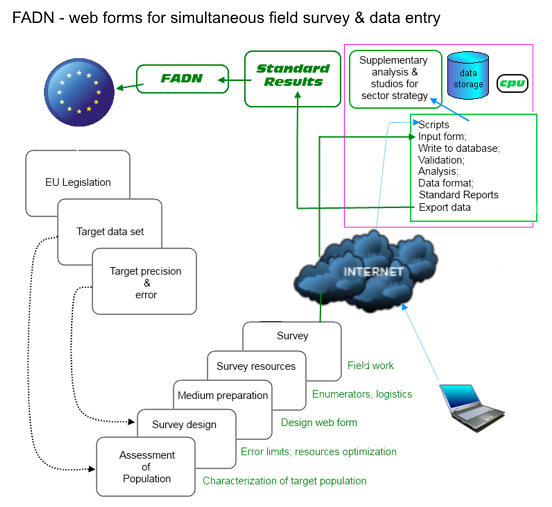From chain gang to Blockchain - the necessary transition
Hector McNeill
SEEL
The chain gang
The British electorate asks,
"How much further do we need to pull this hulk?"
Adapted from
"Burlaks on the Volga", Ilya Yefimovich Repin, 1870-73
Bibliotheque Des Arts Decoratifs, Paris |
|
|
Summary: Cynicism greets many who suggest that the constitutional economic approach can improve growth in the economy. Human nature and the inability to track everything of relevance are put up as "realistic obstacles" with no effort going into the identification of practical options to conventional macroeconomic policies. This essay explains how human nature, or motivations, and new technologies can shape a more practical and successful approach to macreoconomic policy.
Sometime in 1870, Ilya Repin, the Russian artist, noticed exhausted men, dragging a barge along the Neva River, and against the current. He was shocked at the state of these men. He returned to visit them to study them so as to create his famous painting of the Volga Boatmen revealed in 1873. This was almost a revolutionary act to represent the lives of the oppressed. These men had been provided with this work of hard labour to prevent them from dying of hunger.
Today in Britain failed macroeconomic policies impose a similar chain gang existence with most of the population suffering falling real wages as a direct result of Bank of England policies that consider 2% inflation to be the equivalent to "price stability". This devalues real wages by over 18% each decade while shoring up the value of assets such as houses and other factors used as collateral for finance. Because real purchasing power of wages is falling people can only sustain their standard of living by using credit, which sustains an ever deepening "income illusion". The real wage crisis has evolved to first of all affect lower income groups but now it is affecting middle income strata in Britain, or, the majority of the social constituency. Naturally those who earn their living supported by the asset economy which the macroeoconomic policies, and monetary policy in particular, enjoy higher incomes was well as real income rises. Government revenue seeking is based on a taxation regime that taxes corporate profits and it applies an accountancy framework that classifies wages as a cost thereby biasing corporate decision making to favour profits at the expense of wages. Conventional macroeconomic policies are failing to accommodate the needs of the majority of the people of Britain.
The Micawber principle of monetary policy
The Micawber principle

Illustration by the artist Frank Reynolds (1876-1953)
"Something will turn up!"
Wilkins Micawber the Charles Dickens character, was permanently in debt, spent time handing out IOUs, being held in debtors prisons and inventing imaginative schemes to keep creditors at bay. When asked what his prospects were, as a cheery and good natured optimist, he would always reply that, "something will turn up!"
In a masterstroke of irony, Charles Dickens ends the book by making Wilkins Micawber a highly successful bank manager and magistrate. |
|
|
There is little doubt that so called forward guidance and other postures contribute little to the fact that the economy is not achieving sufficient gains in productivity to generate real growth as well as help pay back debt. Policy makers will seldom admit that they are treading water and in spite of assertions that there is growth it would appear that rather than realize the economic theory and practice is defective their is a fatalistic and unacceptable state of affairs where all appear to have accepted the Micawber principle that "Something will turn up".

Charles Dickens was a Parliamentary reporter for about five years and found politicians to be pompous and to make promises which they did not keep. He considered Parliament to be a sort of circus or bear garden. In his novel "David Copperfield" he made David a parliamentary reporter who stated, "Night after night, I record predictions that never come to pass, professions that are never fulfilled, explanations that are only meant to mystify. I am sufficiently behind the scenes to know the worth of political life. I am quite an Infidel about it - and shall never be converted." |
|
|
Why do politicians get things wrong?
Without getting into pointless partisan arguments about the logic of Right and Left wing politics it is more productive to acknowledge the variable performance of the British economy since 1945 involving governments of different parties. The overbearing common factor has not been the points of view of parties but rather the common factor of applying the same defective conventional macroeconomic theory and practice which has brought the us three major recessions that no one voted for in 1929, 1970-1980 and post-2007.
In a sense it is unfair to blame politicians because they all adhere to the creeds of their political parties and loyalty is rewarded by their becoming part of the government as opposed to sitting on the back benches. The whip system often sees politicians voting according to party dictats as opposed to any consensus of constituency interests. A most serious factor is that it is politicians who shape policy, legislate and implement macroeconomic frameworks. The problem here is that today all of our "major" political parties are in fact tiny private groups with a miniscule memberships which together represents no more that 0.5% of the British electorate. As such our political parties are unrepresentative factions whose membership does not possess the intellectual critical mass to even begin to question matters such as econonomic theory and practice. Relying heavily on support from corporations, unions and the media political parties are heavily influenced by corporate interests who possess the resources to support "think tanks" and "policy units" that first and foremost promote policies deemed to be acceptable because they are in the interests of those who support the groups carrying out such work. Political parties haplessly support such hand outs, usually after a certain amount of cherry picking and therefore often ending up with a degraded and less cohesive policy. The nature of Parliamentary majorities under our first-past-the-post electoral system means such policies enter into legislation facing very little analysis or inputs to balance legislation in relation to the conditions of the social and economic constituencies in this country. The result has been what we have seen and what we experience at the moment, policies that do not accommodate the preferences of the social and economic constituencies and a lack of traction. The promise of policy outcomes is largely based on assertion and a good deal of waiting for results or a practical example of the Micawber principle.
Constitutional economics
An important aspect of constitutional economics is public choice theory. That is, a study of the mechanisms whereby the people of a country can express their freely-formed views on how we should advance, as a nation, and how the constitution can support the mechanisms that give a fair voice and levels of participation to the population in the decision-making that moulds that advance. Public choice theory points out that it is close to impossible to satisfy the majority through the current constitutional mechanisms that exist where the assembly (Parliament) taking decisions is centralized and, in addition, its members are identified and act in line with the wishes of political parties rather than constituents.
James Buchanan, the leading international developer of constitutional economics, did however define important principles that cause us to work harder to prevent the limited vision of MPs intellectually-shackled by their membership, and by the whips, of political parties from causing yet more economic damage to the fabric of the economy and to the prospects of the people of this country.
According to Buchanan the ethic of constitutionalism is where the individual who is expressing preferences for social and economic conduct, together with others in society, adopts the moral law as a general rule for behaviour. He rejects any organic conception of the state as superior in wisdom, to the citizens of this state. This philosophical position forms the basis of constitutional economics. Buchanan believed that every constitution is created for at least several generations of citizens. Therefore, it must be able to balance the interests of the state, society, and each individual.
The sophistication of Buchanan's analysis related to his making sense of "Political Economy" by making a distinction between politics and policy. Politics sets the rules of the game, whereas policy is focused on strategies that players adopt within a given set of rules. Questions about what are good rules of the game are in the domain of social philosophy, whereas questions about the strategies that players will adopt given those rules is the domain of economics, and it is the play between the rules (social philosophy) and the strategies (economics) that constitutes what Buchanan refers to as "constitutional political economy”. Buchanan, did much to introduce ethics, legal political thinking, and social thinking into economics and therefore set out a more rational canvas upon which to found a better future.
From theory to practice
The Real Incomes Approach to economics is a transformation of Buchanan's theoretical principles on constitutional economics into a general framework for bringing about the necessary transition in economic governance by acknowledging the long list of practical defects in conventional macroeconomic theory and practice of and replacing the largely top-down arbitrary monopolistic interventions in interest rates, money volumes, taxation, public expenditure and raising of government debt by a system geared to microeconomic imperatives of providing incentives for achieving economic growth based on higher physical productivity and economic productivity based on price-setting to increase the purchasing power of the pound and general real income levels.
 One of the policy propositions under the Real Incomes Approach is Price Performance Policy (PPP). Under this policy managers can allocate resources to achieve a desirable Price Performance Ratio (PPR) so as to maximize real incomes according to capabilities and access to resources. Real incomes are maximized by the degree to which management decisions trade off: One of the policy propositions under the Real Incomes Approach is Price Performance Policy (PPP). Under this policy managers can allocate resources to achieve a desirable Price Performance Ratio (PPR) so as to maximize real incomes according to capabilities and access to resources. Real incomes are maximized by the degree to which management decisions trade off:
- gains in physical productivity
- aggregate unit cost reductions
- unit output price-setting
- growth in revenue resulting from market penetration
Unlike Aggregate Demand Model (ADM) and related microeconomic theory, managers are not only relying upon a demand reference price and applying marginal cost and return theory because unit prices are not fixed. Indeed, unit prices are set by the firm and not by the market. If the management have sufficient information concerning the numbers of their target constituents and the reigning prices paid as well as the participation of other providers, it is possible to shift current "market elasticity of demand" schedules through lower unit prices. As a result the parameters governing resources allocation are more flexible and the potential rewards greater because of the relationship between the PPR achieved and the relevant Price Performance Levy (PPL). This flexibility can be measured in cash flow terms.
With regard to investment, it needs to be kept in mind that benefits under PPP come from current operational performance and not from promised future performance. There is therefore an emphasis on a process of refinement of production processes. Production processes for the supply of products or services are made up of equipment and people who make use of material and energy and information as inputs. The overall potential productivity is wholly dependent upon the design of the output as well as the process creating that output. The output design needs to fall with the limits of feasibility of state-of-the-art technology and techniques and the process design needs to satisfy the desired output specification at the lowest cost, most timely manner and at the lowest risk.
In terms of design and operational standards the process needs to be effective and efficient.
PPP compensates operations that achieve simultaneous unit cost and price control and this is only feasible if the investment contributing to costs is selected carefully so as to gain a measurable cost reduction to compensate for maintained or reduced unit output prices. Under the ADM this would be perceived to entail elevated risk because of the possibility of reduced margins not being compensated by adequate growth in market penetration. However, under PPP the risk factors can be reduced significantly by targeting a beneficial PPR so as to end up with a higher net of PPL real income status.
In practice
Fiscal neutrality
Fiscal neutrality is a term commonly used to indicate that any policy changes should not alter the nominal government revenue so as to ensure public service provisions remain "as is".
Under PPP fiscal neutrality needs to be adjusted to reflect the evolution in currency purchasing power and real income changes so as to adjust nominal revenue demands downwards according to the increased purchasing power of the currency and thereby reduce the rates of taxation. |
|
|
For all of this to work it is evident that a specific core dataset needs to be collected by companies to make sure decisions on resources allocation under PPP end up generating desired results. At the same time there is a need for transparency in dataset collection and analysis in two senses:
- data should accurately record all relevant transactions
- this data need to be made available to the PPL Agency
It needs to be emphasized that PPP has the objective providing a strong incentive for companies to enhance their productivity as well as their real income accounts. PPP has no role in government revenue collection which is a separate operation. On the other hand, PPP has a direct role in increasing real incomes growth through enhance price-related purchasing power of the currency and therefore has a role in reducing the percentage of net of PPL real incomes needed to support public services. This means government revenue-seeking activities need to be attuned to the evolution in real incomes to ensure that "fiscal neutrality" considerations relates to real revenue and nor nominal revenue as is the case at present.
Sharing data strategy

Applying the principles applied in the legal framework for the European FADN (Farm Accountancy Data Network) can enable the PPL Agent to check the accuracy of the PPR estimates without providing any of the core data, partial or otherwise, to the tax authorities. |
|
|
Trust
Given the current practice of ex post accounting accompanied by "creative accounting" and tax avoidance it is likely that the business community would view with some trepidation the notion that a PPL Agency should have access to their core transactional data. This, it would seem, would limit their ability to "adjust" accounting information so as to trade off the desire to maximize profits against the equally strong desire to minimize tax.
There are, however, functional legally-binding corporate data collection systems run under government programmes and throughout the European Union1 that do not reveal the details of data collected to the tax authorities. PPP could run the PPL Agency operations in the same way.
Shared Core Dataset
The core data required to determine the PPR is as follows:
- quantities of specified input components required to produce one unit of specified output of services or products
- unit prices of specified unit quantities of inputs
- quantities of inputs purchased
- date and time of transaction and transfer of ownership
- unit prices of specified unit quantities of services and products sold
- quantities of services and product sold
- date and time of transaction and transfer of ownership
|
Additional information of importance to corporate management:
- plant or corporate capacity for production
- capacity utilization achieved in work
- time allocated to work
- yield
- input inventory
- output inventory
- monitoring indicators of market penetration
- feasible PPR targets
|
Real Time Audit & Blockchains

Blockchain update ...
|
The record of all transactions would be based on a proven operational concept such as that used in commodity trading and cryptocurrency public ledgers known as Blockchains. These are updated on a regular basis providing close to real time access, analysis and reporting. |
|
|
The Blockchain & data collection

The crypto currency Blockchain has established the feasibility of total and precise oversight of all transactions . . . |
|
|
Today the capabilities of the World Wide Web (w3) enable there to be real time recording of all corporate data so as to improve decision-making. The state-of-the-art capabilities provide an operational capability of combining Real Time Audit with the public ledger operation applied for crypto currencies such as Bitcoin, known as the Blockchain. These are updated on a regular basis providing close to real time access, analysis and reporting.
transactional elements
The main difference under PPP would be that the Blockchain would not be a public ledger but an encrypted service to which only authorized corporate personnel and the PPL Agency would have access.
Assessment periods
Depending on the volatility of prices in factor, product and service markets as well as the purchasing and selling characteristics over time it is possible for two companies to be operating within the same sector but whose decision-making results in their price regimes being different even although they are operating in the same factor and product markets. Therefore using weighted market moving averages based on market statistics cannot be used to assess the actual PPR of each company. It is necessary to have access to the details of all transactions associated with each participant economic unit.
Depending upon the typical purchase and sales cycle where some companies will have very long period between these events taken up with processing and preparation of output, then PPRs can be calculated on the basis of period cycles that reflect the state of activity cycle rather than used annual "returns".
Management planning strategies
In order to benefit from more rapid pay backs from more frequent assessment of PPR so as to apply the PPL it is feasible for management to run their business on the basis of shorter PPR assessment periods. However, this requires careful planning so as to ensure that there is sufficient potential physical and pricing flexibility in the next period to maintain the PPR values at the desired levels.
Why is it in the interests of companies to welcome PPP?
The conditioned reaction of many business leaders would be to suspect the efficacy of PPP to help increase returns to investment and their real incomes. However, comparing outcomes under PPP with operations under flat tax or conventional corporate tax regimes shows that returns are higher under PPP. The PP Levy ensures that price completive companies who secure higher physical productivity can obtain higher returns under more competitive conditions. This beneficial state is also associated with less risk. In fact companies who remain outside the PPP regime would not be able to compete effectively with those operating within a PPP framework3. There is therefore no need for obligation but rather PPP could be introduced as an option allowing companies to opt in or out of the scheme. Those desiring higher incomes will opt for PPP.
Public services
PPP reduces inflation while augmenting consumption as a result of increases in the purchasing power of the pound. This rise in unit currency purchasing power would result in a given provision of real public services requiring a lower nominal outlay of money thereby incrementally reducing the tax rates required to support the public sector. The effectiveness and efficiency of public services delivery can be greatly enhanced by bringing them under the PPP regime to operate on the same basis as the private sector.
Other requirements
Good strategic planning based on the motivation of maximizing real incomes requires an ability to:
- identify customer needs in terms of product or service quality and unit prices
- identify appropriate product and service design requirements and to act upon them
- identify any process modifications and act upon them
These management actions require careful needs identification, and decision analysis for product and process design including the setting up of a Real Time Audit (RTA) system2 together with what are known as Tactical Options Maps (TOMs)
These important elements will be reviewed in a forthcoming essay.
1 McNeill, H. W., "Agricultural Information System - Description of the core AIS", 103 pp., BiHAIS Project, Ministry of Foreign Trade & Economic Relations (MoFTER), Sarajevo, Bosnia & Herzegovina, February, 2011 and McNeill, H. W., Annex 2, "Detailed operational requirements of the AIS core subcomponents" FADN, pages 36-52, 66 pp.,BiHAIS Project, Ministry of Foreign Trade & Economic Relations (MoFTER), Sarajevo, February, 2011 (see excerpts below)

This diagram shows a recent design of an online economic data collection system that can operate in real time and provide subsequent on-demand analysis and reporting.
Source: McNeill, H. W., "AIS Development Strategy" FADN, Page 40, 63pp., BiHAIS Project, Ministry of Foreign Trade & Economic Relations (MoFTER), Sarajevo, February, 2011. |
|
|
FADN - The Farm Accountancy Data Network (FADN) is a survey and analysis activity for evaluating the income of agricultural holdings and the impacts of the Common Agricultural Policy. It consists of an annual survey of farm accountancy data from a sample of the agricultural holdings. FADN is the only source of microeconomic data that is harmonized, i.e. based upon a common bookkeeping principle.
Sample survey: Holdings are selected to take part in the survey on the basis of sampling plans established at the level of each region in the Union. The survey does not cover all the agricultural holdings in the Union but only those which due to their size could be considered commercial. The methodology applied aims to provide representative data within survey strata defined on the basis of a 3 component typology of region, economic size and type of farming. An individual weight is applied to each farm in the sample, this corresponding to the number of farms in the 3-way stratification cell of the field of observations divided by the number of farms in the corresponding cell in the sample. This weighting system is used in the calculation of standard results.
The aim of the network is to gather accountancy data from farms for the determination of incomes and business analysis of agricultural holdings. Currently, the annual sample covers approximately 80.000 holdings. They represent a population of about 5.000.000 farms in the 25 Member States, which cover approximately 90% of the total utilized agricultural area (UAA) and account for about 90% of the total agricultural production of the Union. For the EU-27, FADN represents about 6.400.000 farms. The information collected, for each sample farm, concerns approximately 1000 variables and is transmitted by Liaison Agencies. These variables described in a specific questionnaire called Farm Return refer to:
- Physical and structural data, such as location, crop areas, livestock numbers, labour force, equipment
- Economic and financial data, such as the value of production of the different crops, stocks, sales and purchases, production costs, assets, liabilities, production quotas and subsidies, including those connected with the application of CAP measures
|
FADN is principally concerned with agriculture :
The FADN survey covers the entire range of agricultural activities on farms. Moreover, it also collects data on nonagricultural farming activities (such as tourism and forestry).
FADN Legal Basis: The legislation establishing FADN is Council Regulation 79/65/EEC of 15 June 1965. This legislation has since been modified and expanded. the list of relevant regulations see http://eur-lex.europa.eu/en/legis/latest/chap0330.htm
Data is confidential: Incorporated into the founding legislation of FADN is a stipulation that all data relating to individual farms received by the Commission are to be treated with utmost confidentiality. Consequently, data at the level of individual farms are normally not released outside the Directorate General for Agriculture of the Commission. Only aggregated results for a group of farms and for farms within regions and Member States are published since, at this level of aggregation, information relating to individual farms cannot be discerned.
2 McNeill, H. W., & Belko, F., "Towards more effective Project Management", George Boole Foundation, London, 2011.
3 Note - this reference is out of date and being revised: McNeill, H. W., "The Real Incomes Approach to Economics - Its theory & practice", pages:48-53, 88pp., HPC, Portsmouth, August, 2013, ISBN: 978-0-907833-04-8.
|
|
|
|